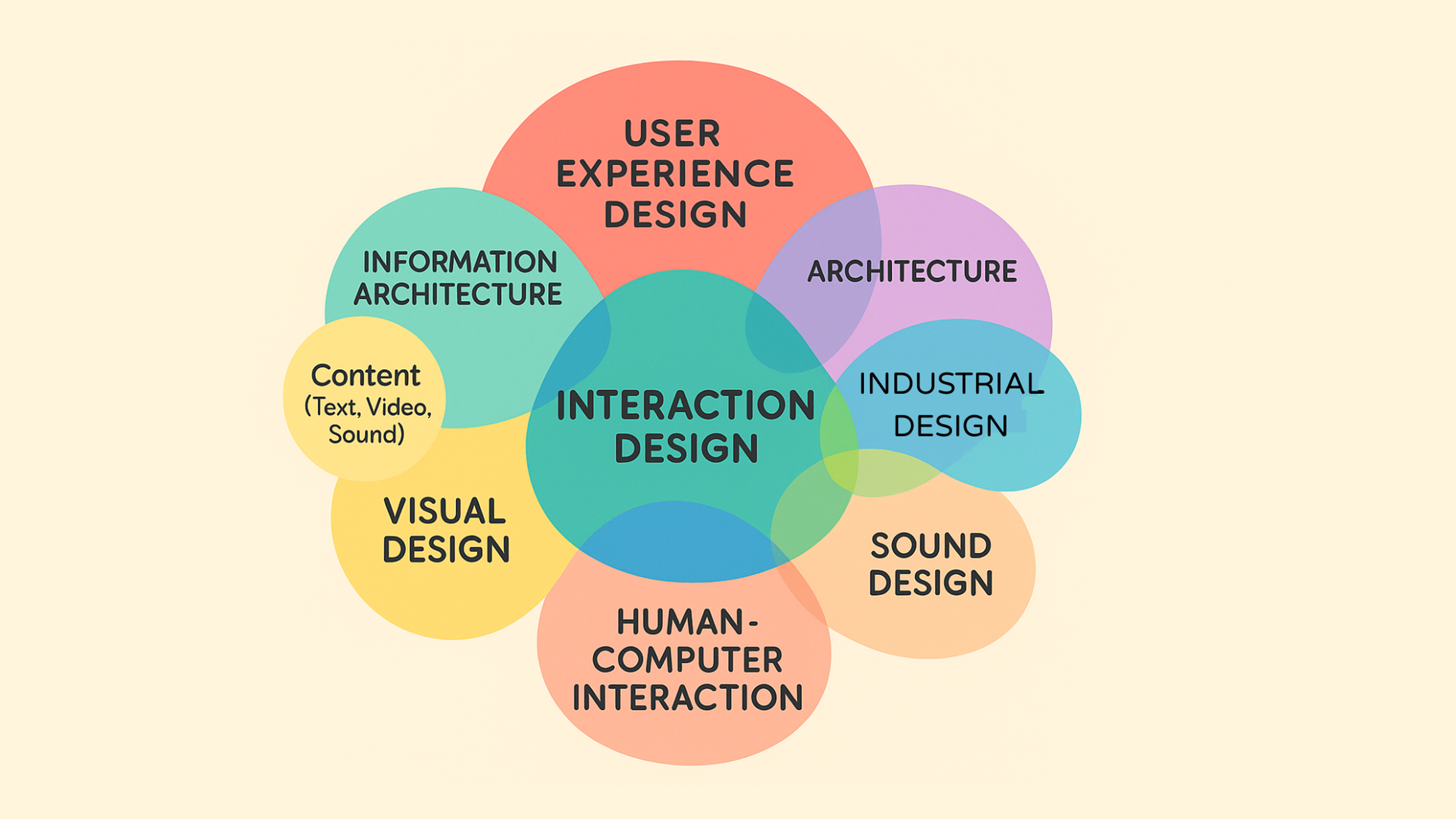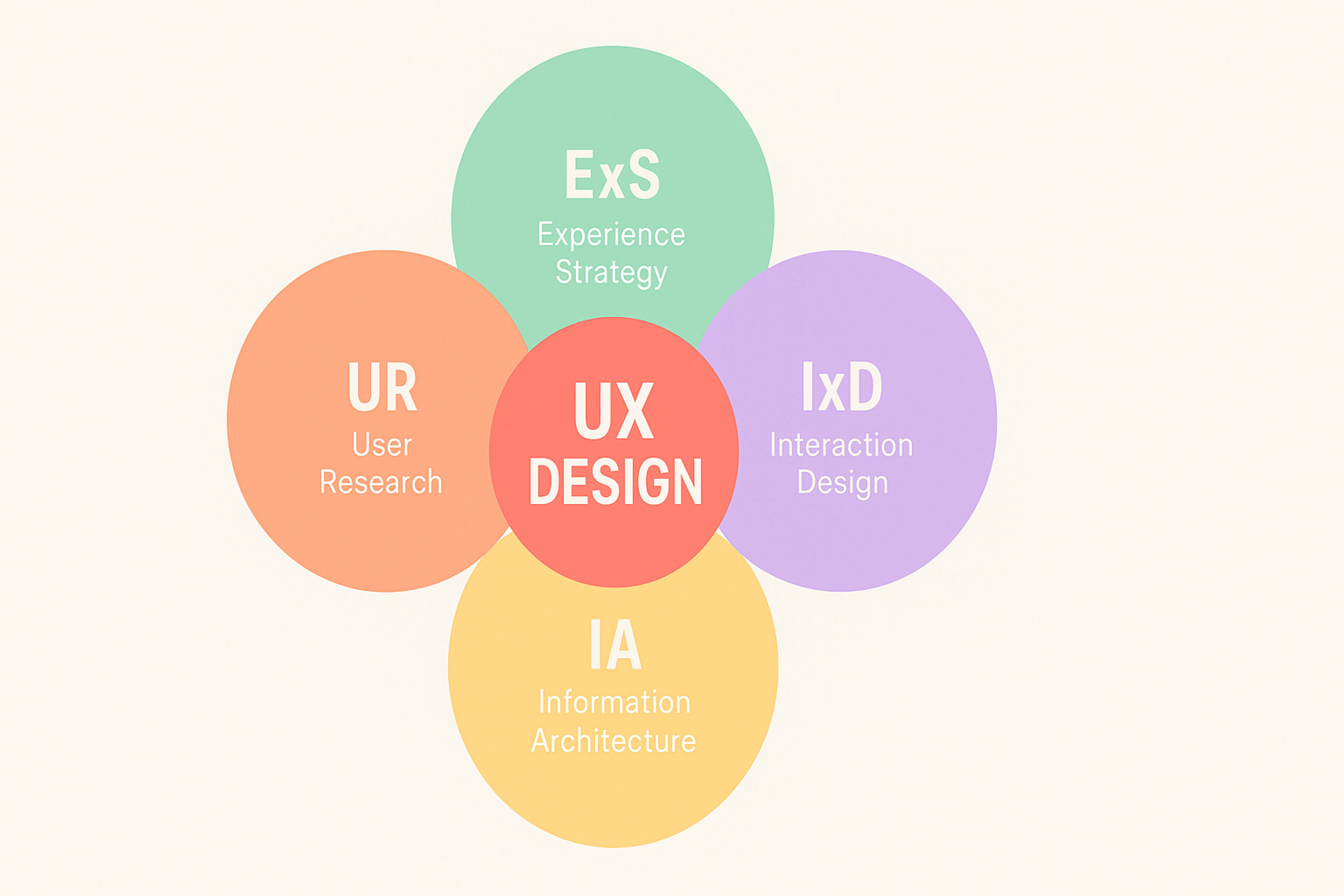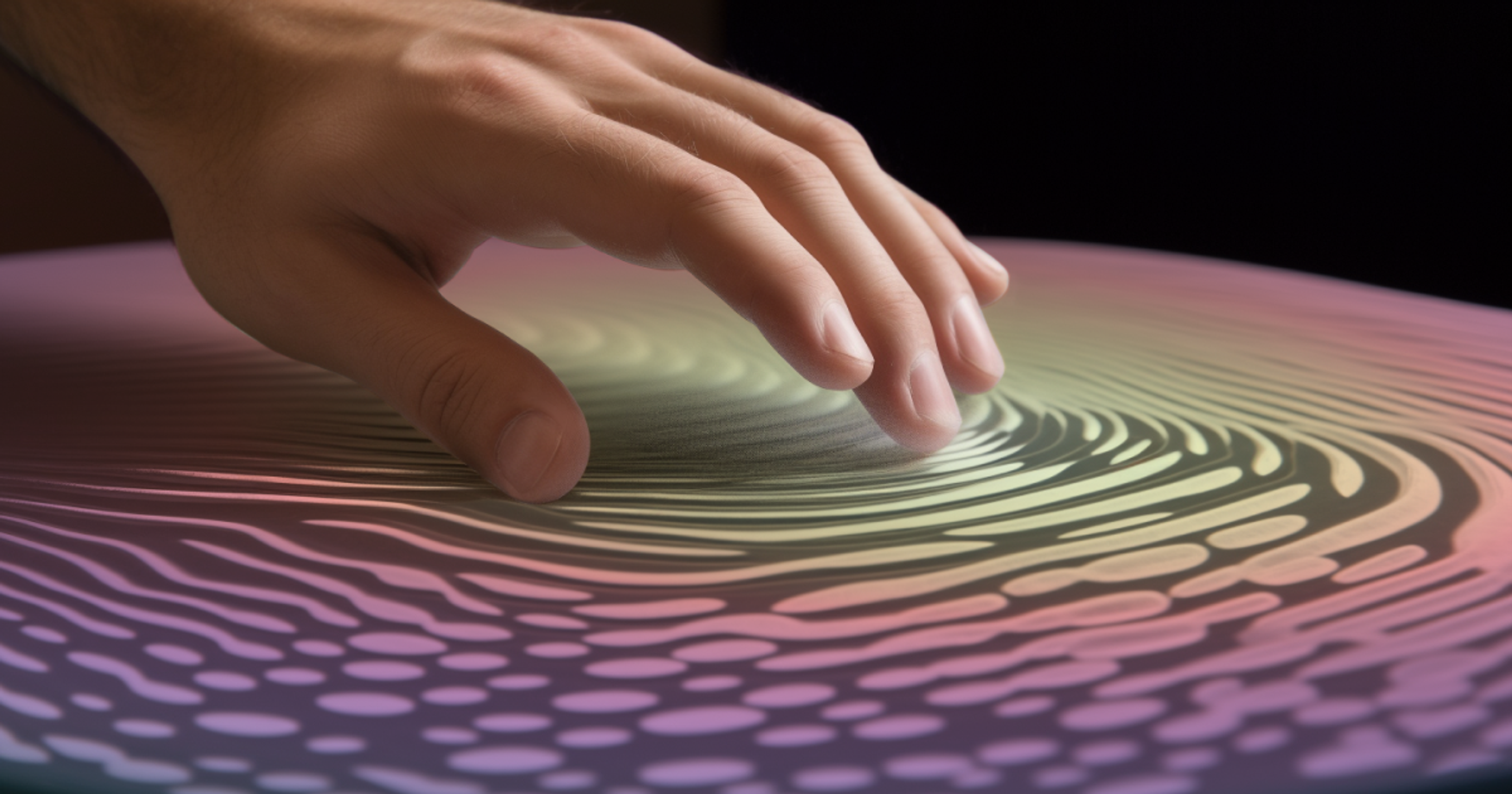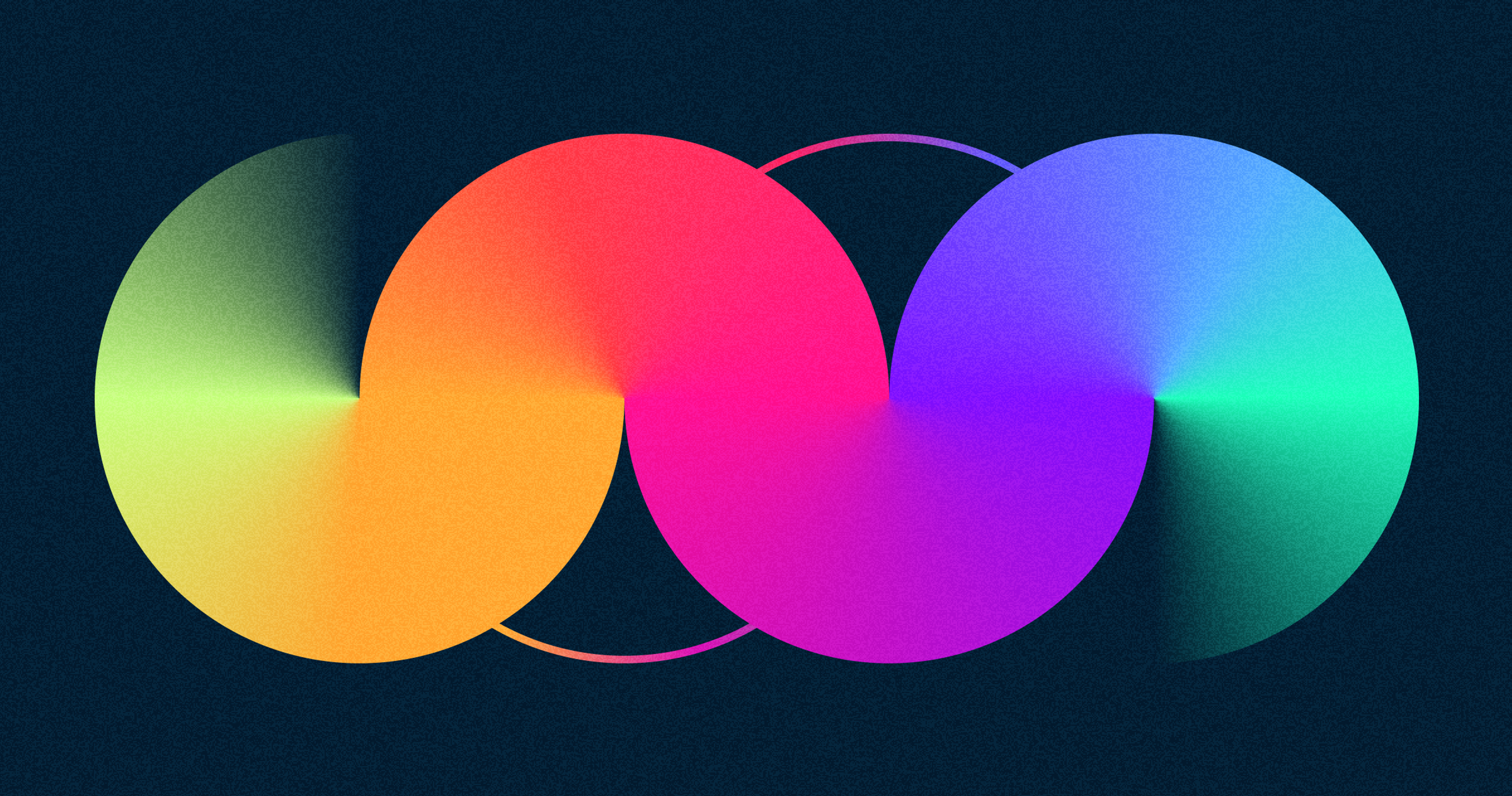So, what is interaction design? It's a way of designing products and services that focus on how people interact with them. Interaction design, or IxD, helps shape how we use technology — whether it's a phone, a website, or an app.
It starts by understanding what users need and what motivates them. Designers use this knowledge to create simple, helpful interfaces that make tasks easier to complete. It uses interaction design frameworks and follows interaction design principles to guide this process.
Interaction design comes from human-computer interaction (HCI) research. But over time, it has grown into its own field with its own ideas and methods. It now explores interaction psychology and examines interaction paradigms to create better user experiences. Brand interaction design exploration helps companies understand how their visual identity can enhance these digital interactions.
What Is Interaction Design?
Interaction design is the study of how people interact with digital products and systems. It focuses on creating smooth, useful experiences that meet user needs in real situations. It applies interaction design and often applies cognitive interaction design to ensure the solution aligns with human behavior.
This field blends many areas, including graphic design, software engineering, psychology, product design, and more. It brings together different skills to better understand how people use technology. It also understands interaction semantics and analyzes interaction complexity to optimize systems. Brand interaction design integration ensures these diverse elements work together to support the overall brand experience.
The main goal of interaction design is to create experiences that feel easy, natural, and enjoyable. Designers work on websites, apps, smart devices, and even self-driving cars - anything that involves people using digital systems. It also practices interaction design through iterative development and research. It creates interaction feedback that improves satisfaction and retention.
Origins and Development of Interaction Design
Interaction design had its roots in the mid-20th century when scientists and engineers began creating machines that could interact with humans through visual feedback and interface elements such as displays or buttons - thus initiating the field of Human-Computer Interactions (HCI).
Since then, it has grown into an increasingly complex discipline that continues developing as technology advances at rapid speed - adopting new forms such as AI (Artificial Intelligence), VR (Virtual Reality), or AR (Augmented Reality). Modern interaction design now also explores interaction paradigms and considers interaction design ethics to account for evolving user expectations and social responsibility.
Brand interaction design has become an essential part of this evolution, helping companies create consistent experiences across all digital touchpoints.
Interaction Design

What Are the Benefits of Interaction Design?
Interaction design helps make products easier and more enjoyable to use. It also increases a product’s success in the market. It uses cognitive interaction design to align system behavior with mental models.
Good interaction design focuses on the user. It makes sure that people can interact with technology smoothly and without stress. This approach also analyzes interaction flow to minimize friction in the user journey. It develops interaction feedback mechanisms that adapt to user behavior and reinforce successful interactions.
When a product is easy to use, people enjoy it more. They are more likely to return and stay loyal. Strong interaction design also helps people complete tasks quickly and with less effort. It creates interaction feedback mechanisms that reassure users and support learning.
By focusing on real users (their needs, goals, and opinions), designers can create products that feel natural and useful. This leads to better adoption and happier users. It also develops interaction feedback mechanisms that adapt to various user actions. Brand interaction design alignment ensures that these user-centered approaches also support broader brand objectives.
Clear, interactive designs also boost business success. They guide people through actions like signing up or buying a product with ease. These designs rely on interaction design techniques and implements interaction design patterns that are proven to improve usability.
In short, interaction design plays a big role in building digital spaces that are useful, appealing, and easy to use. It creates interaction feedback that improves satisfaction and retention.
Interaction Design Elements

The Five Dimensions of Interaction Design
Gillian Crampton Smith, an esteemed interaction and user interface design academic, first developed a framework of four dimensions that encapsulate what is necessary for successful interaction design.
Building on her work, Kevin Silver added a fifth element to create the renowned five-dimensional model of essential components needed for efficient and effective user interface designs.
IxD involves words (1D), visual representations (2D), physical objects/space (3D), time (4D), and behavior (5D).
- 1D: Words. Text can be an incredible tool for speaking to users in meaningful and straightforward ways that won't require them to digest too much information. Words, like those used on buttons or interaction prompts, should make sense and remain concise - providing just enough context without overloading the user.
- 2D: Visual representations. Words alone can't always fully and effectively convey a message. That's why visual representations, such as typography, icons, and other graphics, are so important - they help users interact with and understand content engagingly. When used together with words, these visuals can create powerful communication that users won’t forget anytime soon!
- 3D: Physical objects or space. Physical objects are how users interact with products and services, like a computer and mouse in an office environment. By utilizing these interaction mediums, users' experience is enhanced as they navigate their tasks more easily.
- 4D: Time. Time assists users in comprehending visual modifications of a UI and allows them to monitor their progress.
- 5D: Behavior. Behavior goes beyond action and reaction; it is how we engage with a product. It determines how our interactions shape up both ways. Designers often establishes interaction feedback and designs interaction feedback mechanisms to support this behavior.
Source: Anete Lūsiņa on Unsplash

When formulating key interactions in their designs, interaction designers should consider how the user interacts with all five dimensions to understand the relationship between the user and the product. This involves interaction design pattern analysis and user interaction modeling.
Interaction Design vs UI Design
While closely related, interaction design and UI design serve distinct roles in shaping user experiences. Interaction design focuses on how users engage with a digital product, covering animations, microinteractions, transitions, and search behavior. It determines what happens when users click, swipe, or hover, ensuring smooth and intuitive interactions. It also creates interaction feedback mechanisms to make systems feel responsive and intuitive.
UI design, on the other hand, is about visual aesthetics - choosing colors, typography, icons, and layouts to create a polished and cohesive interface.
Simply put:
- Interaction design controls behavior and responsiveness.
- UI design defines appearance and branding.
In smaller companies, UI designers often handle both, while larger organizations separate the roles. However, in digital product design, these disciplines frequently overlap to create seamless, engaging experiences.
Interaction Design and User Experience
Interaction design and user experience (UX) create engaging, delightful user experiences. Both UX and interaction design focus on understanding users' needs and creating products or services that meet those needs.
The difference is that interaction design focuses on how people interact with technology and influences user emotional responses At the same time, UX covers a broader range of topics, such as usability, accessibility, branding, and content.
Interaction design involves understanding the users' goals, motivations, tasks, behavior patterns, and context for their interactions with technology. It is a process of designing the user interface (UI) to interact with the interface through visual elements like buttons, menus, labels, images, videos, and more, making it easy for users to complete tasks quickly with minimal effort. It establishes design system architecture to ensure consistent and scalable UI behavior.
Interaction Designers of an interactive element must also consider factors such as feedback loops - where an action triggers a response from the system - and transitions between states or screens to create smooth experiences throughout the product or service journey. They frequently establishes interaction feedback mechanisms to enhance clarity and trust.
UX aims to craft a user experience design that meets user needs enjoyably. This includes ensuring that the product is usable - meaning it can be used without confusion or frustration - accessible for all users regardless of their abilities or disabilities, consistent across multiple devices and platforms, secure from malicious attacks, and branded to ensure recognition among current and potential customers.
Additionally, UX emphasizes content quality, which should be clear and concise yet comprehensive enough to provide value to users while avoiding any unnecessary clutter or distractions.
By understanding how people use products and striving to meet their needs through providing engaging experiences (UX), interaction designers can create meaningful interactive digital products and systems that improve efficiency while being enjoyable to use simultaneously.
UX Design

Who Are Interaction Designers?
In short, interaction designers combine psychology principles with design knowledge to produce efficient and enjoyable products for their intended use cases. They explores interaction psychology to understand how people perceive and engage with systems.
They are responsible for creating human-centric products - meaning they focus on designing interactions meeting the needs of people in meaningful ways - while ensuring that any other user interactions made with such products are simple yet effective enough for everyday use.
The role of an Interaction Designer is to design digital products and services that incorporate interactions between users and technology to create meaningful relationships. They are responsible for the overall user experience, from concept to completion. They also practices interaction design methodology that helps align strategy, research, and execution.
When creating a compelling user experience, there are several approaches used by interaction designers, such as:
- Task analysis, which means understanding what tasks users need to complete so you can provide them with appropriate tools and focuses on interaction design;
- prototyping, which means creating a working model early on so you can test different features quickly without spoiling any surprises for end users;
- storyboarding, which gives an overview of user flows throughout your product/website/app/etc. and organizes information design;
- wireframing, which is used to create layouts representing each page in your product/website/app/etc. and improves interaction design;
- user testing, where you measure how people interact with your product based on realistic scenarios rather than relying solely on subjective opinions or guesses, among other approaches. This process also supports information design.
Each of these methods plays a role in user interaction modeling and refining interaction design patterns.
Typical Interaction Designer Roles

Standard Tools Used in Interaction Design
The most commonly used tools in interaction design include SketchApp, Principle, InVision Studio, Framer X, and UXPin, among many others - all designed specifically for UX/UI designers who need powerful but easy-to-use tools for prototyping user interfaces quickly without coding knowledge requirements.
These tools allow interaction designers to create interactive prototypes and collaborate to create desired user experiences while maintaining control over every aspect, from color schemas and typography elements to custom components and animations. These tools support teams that practice interaction design, apply interaction design, and use interaction design frameworks in their everyday workflows.
How to Measure the Success of Interaction Design?
Interaction design (IxD) is a subdivision of UX design that helps guarantee users reach their aims by properly utilizing the system. Ushering IxD’s influence on the business's financial outcome can assist in gaining approval from high-level decision-makers.
Establishing and reestablishing how effective interaction design is through measuring its impact and testing will indisputably prove its worthiness to stakeholders. Effective teams often perform interaction design pattern analysis to review what patterns worked and how they influenced success metrics.
The HEART framework is a beautiful mechanism to judge user experience design, although the attributes also apply to interaction design. For example, you can assess users’ satisfaction with surveys on customer happiness, net promoter score, and usability.
You should also consider how involved and engaged your users are by using interface data such as visit frequency or length of stay for each session. Lastly, observe the rate of new user adoption over time - an effective measure to monitor product or feature success!
Google's HEART Framework

Retaining customers is a key element of any successful business. You can measure your progress with an analytical dashboard that tracks new user rates against returning user rates over time.
Additionally, when it comes to interaction design, understanding the effectiveness and efficiency of customer interactions is paramount. By analyzing behavioral metrics such as task completion times, error counts, and more — you can determine how well your customers are succeeding in their tasks. This process applies cognitive interaction design and reflects user interaction modeling for decision-making.
To accurately determine whether a new version of your product has been successful with users, engaging in direct communication and collecting user feedback is vital. A well-designed interactive program makes this process easier to manage and execute user research effectively. Designers who understand interaction semantics are better able to interpret this feedback and act on it meaningfully.
If the results indicate areas for improvement, the designer can adjust, fix any issues, or create a more user-friendly experience — ideally using interaction design methodology as a structured guide for iteration.
Best Practices for IxD
Usability.gov encourages businesses to consider the following queries when creating digital products with interactive components. These prompts align with core interaction design principles and guide teams as they implement interaction design patterns thoughtfully:
- What instructions can a user give to engage with the interface?
- What design elements (color, shape, size) help users understand how the system functions?
- Before taking action, what kind of information do you provide so that people know anticipated outcomes?
- Are there restrictions in place to avoid mistakes and errors from happening?
- If an error occurs, does your program display useful messages for customers to figure out how best to fix it or why such an issue occurred in the first place?
- What feedback does a user get once an action is performed?
- How swiftly does the product respond to our actions?
- Are interactive elements easy to access based on their size and strategic placement of edges/corners?
- Is related information grouped into manageable chunks instead of inundating us all at once, and do we recognize these formats from other familiar sources?
By asking these questions, designers not only practice interaction design but also consider interaction design ethics — ensuring the experience is not only usable, but responsible, inclusive, and transparent. They explore interaction paradigms that guide users across modern interfaces with clarity and purpose.
Read more:
Conclusion
In conclusion, interaction design is an ever-changing field that requires an interdisciplinary approach, combining knowledge from various areas, such as graphic design, software engineering, and psychology.
By understanding users’ needs and expectations along with their context, you’ll be able to create meaningful experiences tailored specifically to them while providing real value and improving their day-to-day lives.


About Clay
Clay is a UI/UX design & branding agency in San Francisco. We team up with startups and leading brands to create transformative digital experience. Clients: Facebook, Slack, Google, Amazon, Credit Karma, Zenefits, etc.
Learn more

About Clay
Clay is a UI/UX design & branding agency in San Francisco. We team up with startups and leading brands to create transformative digital experience. Clients: Facebook, Slack, Google, Amazon, Credit Karma, Zenefits, etc.
Learn more



